
|
![]()
Greatest Films of the 1940s
1940 | 1941 | 1942 | 1943 | 1944 | 1945 | 1946 | 1947 | 1948 | 1949
Title Screen Film Genre(s), Title, Year, (Country), Length, Director, Description 


Citizen Kane (1941), 119 minutes, D: Orson Welles
A masterpiece - a movie milestone. Considered by most film critics as the greatest, or one of the top ten films ever made. It rewrote the rules of Hollywood cinema, setting Hollywood on its ear when first released. The film was co-written, directed, and starred in by 25-year old radio star Orson Welles in his first film effort and on a bare-bones budget. With an acting cast from Welles' own Mercury Theater. It is famous for its innovative cinematic techniques, quick cuts, use of shadows to intensify the drama, limited close-ups when they were in style, deep-focus photography, and dissolves. Told in flashbacks with a multi-viewpoint, non-linear script, the story was the portrait of the public and private life of a newspaper publisher, loosely based on (and paralleling) the life of William Randolph Hearst. The last dying word of newspaper tycoon Charles Foster Kane (Orson Welles), the mysterious "Rosebud," sent reporter Jerry Thompson (William Alland) on a search for the meaning of the word and an understanding of the publishing giant's life. Kane built a publishing empire but ended up undone by his own excesses and obsessions, when he created a castle-like refuge where he was alone.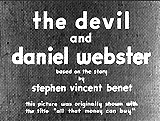


The Devil and Daniel Webster (1941) (aka All That Money Can Buy), 107 minutes, D: William Dieterle
This cautionary moral tale was faithfully based on Stephen Vincent Benét's 1937 Faustian short story, with an Oscar-winning score by Bernard Herrmann. In 1840, poor, 27 year-old Cross Corners, New Hampshire farmer Jabez Stone (James Craig), a kind-hearted man, married for two years to Mary (Anne Shirley), was down on his luck. His family and shrewd and wise mother Ma Stone (Jane Darwell) faced eviction and were in debt to local loan shark Miser Stevens (John Qualen) - threatened with poverty and farm foreclosure. He idly offered to sell his soul for two cents to the jolly but ruthless Mr. Scratch (Walter Huston), aka The Devil or Satan (Mephistopheles). For seven years, Jabez would become financially prosperous and wealthy with lots of good luck (and "all that money can buy"), after which the Devil would take his invisible soul. Jabez found Hessian gold coins under the floor of his barn and immediately paid off his debts to Stevens, and became richer and richer (with the townsfolk owing him money as a fearsome land baron), but also became greedy and hard-hearted. Also, Scratch sent his bewitching and alluring live-in housemaid/nanny/temptress Belle (Simone Simon), callously driving off his wife Mary and newborn son. He also took up drinking and gambling. When 7 years was up, Jabez was given the option of giving up his son to save his soul - but he refused. He enlisted the aid of local hero and famous silver-tongued orator/politician Daniel Webster (Edward Arnold) to defend him - with a jury trial - to plead his case and win back his soul from an iron-clad contract. In the film's dramatic conclusion, the 12-person jury of the "damned" summoned by the Devil was composed of infamous cutthroats, brigands and traitors in American history, such as Benedict Arnold, who had previously sold their souls also. The judge was Justice John Hathorne (W.B. Warner) of the Salem witch trials, who refused cross-examination, and denied disqualification of the prejudiced jury. With eloquent oratory in the final moments, Webster gave an impassioned closing argument, which persuaded the jury and the court to turn against Mr. Scratch, destroy the contract, and have mercy on Jabez's soul.

Dumbo (1941), 63 minutes, D: Disney Studio
A charming, animated Disney story, released to theaters around the time of the surprise attack on Pearl Harbor in Hawaii, and the first of the Disney animated to be released on videocassette (in 1981). It was a twist on the classic ugly duckling story of a shy little circus elephant Dumbo. The baby pachyderm was criticized, ridiculed, and outcast for his ears which were big enough to fly with. He was separated from his mother, Mrs. Jumbo, when she was branded a mad elephant for defending him. He was befriended by circus mouse Timothy Mouse who built his confidence. Dumbo became the overnight sensation of the circus with his flying act, and he was reunited with his mother.


Here Comes Mr. Jordan (1941), 93 minutes, D: Alexander Hall
A highly inventive comedy-fantasy film (with an Oscar-winning Original Screenplay award), with many plot twists and turns. Similar in plot to Angel on My Shoulder (1946). The 1941 film's sequel was Down to Earth (1947), and it was cleverly remade as the sports fantasy Heaven Can Wait (1978) with Warren Beatty as a football player, not a boxer. Not to be confused with Heaven Can Wait (1943) starring Don Ameche and Gene Tierney. A good-natured saxophone-playing prizefighter Joe Pendleton (Robert Montgomery), "The Flying Pug," died in a plane crash in New Jersey 50 years too early due to a heavenly screw-up. He was prematurely brought to heaven (he was supposed to survive the crash) by bumbling, inexperienced busybody Heavenly Messenger No. 7013 (Edward Everett Horton) for check-off by Mr. Jordan (Claude Rains). Because heaven had called him too soon, he was sent back to Earth to live out the remaining years allotted to him, occupying someone else's body. Escorted by Mr. Jordan back to Earth, the body he entered was that of unscrupulous multi-millionaire playboy Bruce Farnsworth who had just been murdered by drowning in his bathtub by his scheming and greedy wife Julia Farnsworth (Rita Johnson) and his male secretary Tony Abbott (John Emery). The murderous pair were shocked and confused to see the deceased suddenly re-emerge from the bathroom. He also utterly befuddled his former fight manager Max Corkle (James Gleason), although was able to secretly reveal his soul's identity. Joe's/Farnsworth's reincarnated spirit fell in love with Bette Logan (Evelyn Keyes), the daughter of a man that Farnsworth had framed for securities fraud. Farnsworth trained with Max to enter a heavyweight championship boxing match against the reigning champ, when Joe/Farnsworth was again murdered by his secretary. Joe's/Farnsworth's replacement in the prize-fight with the champ was K.O. Murdoch. As the fight was about to begin, Murdoch, who had run afoul of the mob, was shot in the ring for betraying gamblers (by not "throwing" the fight). Joe's soul quickly took Murdoch's place, and awakened in Murdock's body lying on the floor of the ring. Joe, as Murdoch, defeated his opponent and won the title of world champ, with only Max realizing that Joe's soul was in Murdoch's body. Murdoch lost his memory of his past life as Joe. In the conclusion, he was strangely drawn to Bette, even though they hadn't met.



High Sierra (1941), 100 minutes, D: Raoul Walsh
A landmark gangster film from Warner Bros. studios (and a script by John Huston adapted from the book by WR Burnett). Remade as a western titled Colorado Territory (1949) with Joel McCrea, and as I Died a Thousand Times (1955) with Jack Palance. It told about aging notorious gangster Roy "Mad Dog" Earle (Humphrey Bogart in his first lead role, although second-billed behind Ida Lupino). Pardoned after 8 years in prison, he was hired by his old crime boss, Big Mac (MacBride), to help amateur cons plan and carry out the jewel heist of a California resort hotel - one final job. He met a runaway dance-hall girl named Marie (Ida Lupino), the girlfriend of one of the thugs nicknamed Babe (Alan Curtis), who eventually became his 'tarnished angel' friend. Before the robbery, he met a destitute grandfather ("Pa") (Henry Travers) and club-footed Velma (Joan Leslie), and offered to pay for surgery to correct her disability. When he visited her after the successful operation, she rejected his marriage proposal ("We can still be friends..."), and he felt heartbroken and betrayed. Although the heist was successful, everything unraveled after a car crash, a cop was killed, and an inside connection squealed to police. In the conclusion, Earle was the target of a suspenseful manhunt high up in the Sierra Mountains as police pursued him in a doomed last stand. Marie refused to call out to him as she told the authorities: "He's gonna die anyway, I'd rather it was this way. Go on, all of you, kill him, kill him..." Earle was shot dead from behind when he called out to his mongrel dog Pard. After he had been killed out in the open, a weeping Marie knelt over Earle's dead body, and asked an uncaring officer (who sarcastically called the dead man "Big-shot Earle" - "Look at him lying there. He ain't much now, is he?"): "Mister, what does it mean when a man crashes out?" When told that it meant being freed ("It means he's free"), she sadly repeated the word "Free?", questioning Roy's unnecessary death. She picked up Pard as she was escorted away and said the word "Free" one more time. The film ended with a blurry fadeout on Marie's tear-stained face as it filled the frame before a pan up to the mountains.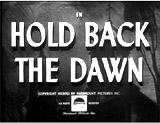


Hold Back the Dawn (1941), 115 minutes, D: Mitchell Leisen
A touching, moving soap-opera style melodrama from Ketti Frings' semi-autobiographical story. This was the last film written by Billy Wilder with his scripting partner Charles Brackett, before he embarked on his own directorial career. This was also the year that this film's star Olivia de Havilland was nominated as Best Actress, competing against her successful sister Joan Fontaine, also nominated for Suspicion (1941) - the first time for a pair of siblings. The film's plot was told in flashback - in the preface, the main character visited Paramount Studios in Los Angeles to sell his hard-luck romantic story to director Dwight Saxon (Mitchell Leisen, the film's actual director), for $500. An unscrupulous, hopeless Romanian refugee, dancer Georges Iscovescu (Charles Boyer) from oppressive war-ravaged Nazi Germany, was stranded in Tijuana, a Mexican border town in the Hotel Esperanza with a number of other hopeful immigrants to the US, stuck with a waiting period of five years. His plan to satisfy immigration officials, especially Inspector Hammock (Walter Abel), was to marry a US citizen to gain entry (requiring only four weeks for a visa). He met and married a lonely, shy, innocent, and trusting American schoolteacher Emmy Brown (Olivia de Havilland), who was visiting with her students on a school trip. Desperate to escape his situation, Iscovescu, a former gigolo, deceitfully lured the gullible Emmy into a quick matrimonial immigration scheme to merely gain entrance. His plan was to desert her after gaining entry, and link up with his old jealous girlfriend Anita Dixon (Paulette Goddard) from the Cote d'Azur who had also married an American to get into the US (and then had dumped him). But then, they both fell deeply in love with each other, evidenced by Georges crossing the border illegally when Emmy had a car accident and was hospitalized and unconscious in Los Angeles. [This was when Georges requested $500 in the preface, to be used to help Emmy.] Although Georges was arrested and brought back to Mexico, he was soon released to cross the border to be with Emmy.


How Green Was My Valley (1941), 118 minutes, D: John Ford
Derived from Richard Llewellyn's best-selling autobiographical novel about labor unrest, personal tragedy, the end to a way of life, and the power of the family. Beautifully directed, vividly photographed, and performed, with a well-written screenplay, one of John Ford's masterpieces (for which he won his third Best Director Oscar). Controversial though, because it won the Best Picture Academy Award over Citizen Kane (1941) and The Maltese Falcon (1941). In voice-over, the life of a Welsh coal mining town in the late 1800s and early 1900s was seen through the sensitive eyes of the youngest son Huw (Roddy McDowall) of the hard-working, close-knit Morgan family (with seven children), relating the story in flashback. With many memorable performances including the family's strict anti-union patriarch Gwillym Morgan (Donald Crisp) and matriarch Beth (Sara Allgood), and the noble-spirited beauty - the lovely unmarried 17 year-old daughter Angharad (19 year-old Irish actress Maureen O'Hara). Domestic life, romance, harsh treatment at school, the departure of two Morgan boys to find their fortune in America, unrequited love between the local preacher Mr. Gruffydd (Walter Pidgeon) and the only Morgan daughter, and other events (such as a labor dispute, and a devastating mine accident) were portrayed within the warm, human story.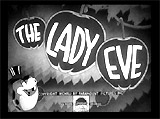


The Lady Eve (1941), 93 minutes, D: Preston Sturges
A classic, witty, romantic screwball comedy of the 1940s, with traditional fast-paced dialogue, farce, slapstick (Fonda's multiple pratfalls) and visual humor. Considered possibly as Preston Sturges' best film, a wonderful battle of the sexes. Con artist, swindler, and professional card shark Jean Harrington (Barbara Stanwyck), with her crooked father "Colonel" Harry Harrington (Charles Coburn) made their living by charming gullible multimillionaires out of their money. On board a luxury ocean liner, she selected her next victim, millionaire herpetologist/ophiologist Charles "Hoppsy" Pike (Henry Fonda), the socially-awkward heir to a brewery fortune, who had just returned from an expedition up the Amazon River. When he was set up, she ran into one difficulty - she had fallen in love with her victim, but he found out about her ulterior motives before she could confess, and he dumped her. To get revenge for being coldly dropped, she posed with another identity - as an English aristocratic lady, Lady Eve Sidwich, and he fell in love with her all over again in front of his tycoon father Horace (Eugene Pallette) at the Pikes' Ridgefield, Connecticut mansion. She later extracted her revenge on their honeymoon on a speeding train.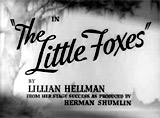

The Little Foxes (1941), 116 minutes, D: William Wyler
Adapted from Lillian Hellman's play (with assistance from others including Dorothy Parker), with fabulous cinematography (deep-focus) by the acclaimed Gregg Toland. Followed by the pre-quel Another Part of the Forest (1948) with Fredric March and Ann Blyth. This was the third icy, mostly-villainous female role that Bette Davis performed for director William Wyler (after Jezebel (1938) and The Letter (1940)). It was the turn-of-the century story about a greedy, corrupt, and dysfunctional Southern family, the Hubbards, who attempted to build a factory on what was once a beautiful plantation. Brothers Ben (Charles Dingle) and Oscar (Carl Benton Reid) schemed to bring industry by building a cotton mill in their small southern town. But they needed the capital of their sister Regina's (Bette Davis) banker husband Horace Giddens (Herbert Marshall) in order to make the deal. The principled Horace, who was an invalid with a bad heart, wanted no part of their exploitative scheme despite Regina's requests. Regina's nephew Leo Hubbard (Dan Duryea), who worked in the bank, stole some bonds from Horace's safe-deposit box to make the deal work. Learning of the theft, the ruthless, manipulative and conniving Regina blackmailed her brothers into giving her a percentage of the business. Horace, however, foiled Regina's scheme when he informed her that he actually gave the money as an interest-free loan, and that he was changing his will in favor of their daughter Alexandra Giddens (Teresa Wright). Before he executed the change, he suffered a heart seizure and collapsed, and in a very bold and memorable scene, the heartless and avaricious Regina refused his pleas for help to get his medicine as he expired on the staircase. The cold-hearted Regina was left alone and deserted by her daughter.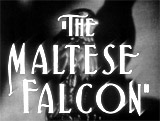






The Maltese Falcon (1941), 100 minutes, D: John Huston
One of the all-time greatest film-noir crime-detective mysteries and scriptwriter John Huston's incredible directorial debut. Adapted from Dashiell Hammett's hard-edged detective novel about greed and deceit. Previously filmed as The Maltese Falcon (1931) (aka Dangerous Female), with Bebe Daniels and Ricardo Cortez, and as director William Dieterle's Satan Met a Lady (1936) with Bette Davis. Poorly remade as Roger Corman's Target: Harry (1969), and the comedy The Black Bird (1975) with George Segal. Hard-boiled San Francisco sleuth/private eye Sam Spade (Humphrey Bogart) was hired by pretty client Ruth Wonderly/Brigid O'Shaughnessy (Mary Astor) to trail her that evening. When partner Miles Archer (Jerome Cowan) was shot dead that night, Spade quickly became a murder suspect. He also found himself at the center of a great deal of attention by a group of shady, unsavory characters (including Fat Man Kasper Gutman (Sydney Greenstreet) and his henchmen Joel Cairo (Peter Lorre) and hired gun Wilmer (Elisha Cook, Jr.)). They were on the elusive search for a "black bird," the stolen Maltese Falcon statuette. With superb moody images, a sinister atmosphere, a pace that accelerated as tension mounted, a treacherous femme fatale (Brigid O'Shaughnessy) and an innovative film noir style.

Meet John Doe (1941), 123 minutes, D: Frank Capra
A dramatic, endearing, and poignant social/political commentary from Frank Capra (and scriptwriter Robert Riskin), Capra's third Depression-Era populist parable about the common man's struggles, following after Mr. Deeds Goes to Town (1936) and Mr. Smith Goes to Washington (1939). Struggling reporter Ann Mitchell (Barbara Stanwyck) was fired, and as a last desperate act to keep her job, she created a fictional "John Doe" character to dramatize the hard times. In his letters to the editor, Doe wrote that he was for the common man and little guy, but was so disgusted by powerful political corruption (and big money interests) that he was going to commit suicide by jumping off City Hall's roof on Christmas Eve. Her ploy worked as a publicity stunt and she was persuaded to continue writing "John Doe" letters to appeal to the masses. When the public's interest took off, the paper had to save its image and find an impersonator to be the real John Doe. They hired naive, homeless tramp, ex-baseball pitcher Long John Willoughby (Gary Cooper) who quickly became a national hero. But he also became the unwitting, manipulated tool of the paper's unscrupulous right-wing publisher, a corrupt politician named D. B. Norton (Edward Arnold). He expected the John Doe Club movement and convention to be an endorsement for his fascist party's run at the White House. In one of the film's most powerful scenes held at a rally, 'John Doe' was denounced as a fraud. He realized that the only way out was to actually commit suicide by jumping off City Hall, but in the final scene, he was persuaded by "the people" who still believed in him to not go through with it.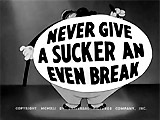

Never Give a Sucker an Even Break (1941), 71 minutes, D: Edward F. Cline
An absurd, wacky film spoofing the film industry and Hollywood, with Fields in his last starring role in a feature-length film. It was a surrealistic film with no real plot, only a series of very funny scenes and bizarre sequences one after the other, to skewer the entire movie business. The Great Man (W. C. Fields), a film scriptwriter, attempted to get backing from a skeptical producer (Franklin Pangborn) at Esoteric Studios for a movie he wished to make about one of his highly improbable romantic adventures. He related the whole story in the hopes of getting financial support. He drunkenly fell out of an airplane, diving to retrieve his bottle of booze, and fell thousands of feet to the ground. He landed in a strange country named Ruritania in the mountain retreat of Mrs. Hemoglobin (Margaret Dumont). There, he met attractive Ouliotta Delight Hemoglobin (Susan Miller), who had never met a man - and he taught her how to play "Post Office." The producer threw the Great Man out of his office after listening to the absurd, impossible tale. The film concluded with a classic car chase scene - he drove an obese woman through downtown Los Angeles to the maternity hospital.

One Foot in Heaven (1941), 106 minutes, D: Irving Rapper
A wholesome, nostalgic, heartwarming, poignant and moving film told episodically, and based on a biographical book written by Hartzell Spence, the son of the actual real-life minister. Although trained to be a doctor, William Spence (Fredric March) in the early 1900s decided to quit his studies and devote himself to God and ministry. The Rev. Spence, now a devoted Methodist minister began his work in a small town in an Iowa community at the turn of the century. He moved from community to community over a period of years, building up the faith of troubled parishes. With his ever-faithful wife Hope Morris Spence (Martha Scott), they were forced to cope with the clash between fast-changing attitudes and church teachings.


Sergeant York (1941), 134 minutes, D: Howard Hawks
The true, but unusual story of World War I's biggest war hero, and the highest grossing film of the year. An authentic war saga and portrait of a poor Tennessee backwoods mountain boy Alvin C. York (Best Actor-winning Gary Cooper). His hot-headed brawling, hell-raising life in Pall Mall changed when he fell in love with teenaged Gracie Williams (Joan Leslie), worked hard to buy farm land for them sometime in the future, and had a life-changing religious experience signaled by a bolt of lightning. When the war broke out, he refused to enlist (as a conscientious objector), but was reluctantly drafted into World War I service, even though he had become deeply religious and pacifistic. He heroically fought in the war, mostly as a great marksman, and killed about 20 Germans (in a machine gun nest to save his comrades), and captured (almost single-handedly) a large regiment of 132 German soldiers in the Battle of the Argonne, becoming the most decorated soldier of the war. Upon his return, he was greeted with parades, the gift of a farm and house by the people of Tennessee, and the love of Gracie. A sensitive, affecting, and compassionate portrayal of York with fast-paced action sequences and some wartime propagandizing.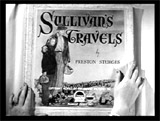


Sullivan's Travels (1941), 91 minutes, D: Preston Sturges
A landmark, classic Hollywood satire and social comedy, thought by many to be Preston Sturges' greatest film. A successful yet naive Hollywood film director John L. Sullivan (Joel McCrea), known for making lightweight, trite movies (musicals and comedies), became disgruntled. He decided to research his next "message" picture to be titled "O Brother, Where Art Thou?" - one that would be more socially worthwhile, by leaving Hollywood disguised in hobo's clothing with only ten cents in his pocket. He nomadically set off cross country for new material for his next movie - about how the common people were experiencing the Great Depression, so that he had a fresh, first-hand experience of the dark days of suffering. He was joined by a waitress and has-been actress dubbed The Girl (Veronica Lake) to encounter the common people during their journey. Only when Sullivan, after one failed attempt to shake off the publicity-seeking studio, experienced real poverty, loss of his name and memory, and his freedom, did he begin to understand the plight of his beaten companions. When he viewed a Mickey Mouse cartoon in a brutal work camp where he had been sentenced to a 6-year term, he discovered the real value of laughter and returned reinvigorated to Hollywood to make comedies that would lift people's spirits.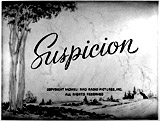


Suspicion (1941), 99 minutes, D: Alfred Hitchcock
A suspenseful classic thriller from Alfred Hitchcock. Fontaine won the Best Actress Academy Award, some thought as consolation for not winning the previous year for Rebecca (1940). A lonely, prim, overprotected and very rich British wall-flower, Lina McLaidlaw (Joan Fontaine), was courted by and fell in love with charming, flamboyant, and debonair playboy Johnnie Aysgarth (Cary Grant), known for his womanizing, fortune-hunting reputation. In an unusual courtship, she learned very little about him and his background. She married him, but then unearthed clues and began to suspect that he was trying to kill her, with a nightly poisoned glass of milk delivered to her. He had created financial difficulties for himself in an embezzlement scheme, and she feared, with mounting tension as the film progressed, that he had plans to do away with her to collect an insurance payoff. Unfortunately, the studio modified the ending, making it a disappointing and contrived finale with a happy ending. She barely escaped death after a careening drive on a twisty cliffside road with Johnnie driving.



That Hamilton Woman (1941, UK), 128 minutes, D: Alexander Korda
A touching, poignant and sadly beautiful costume drama, and reportedly Winston Churchill's favorite film. A realistic, historical portrayal of the ill-fated, tragic romance between England's famous Naval Commander/hero Lord Admiral Horatio Nelson (Laurence Olivier) and Lady Emma Hart Hamilton (Vivien Leigh), portrayed by two married stars who also had an affair while married to other spouses. The story was told in flashback by a drunken cellmate, the former Lady Hamilton. She was a beautiful and intelligent woman of poor, common origin - a dance hall girl. She had raised herself up to become an unloved "trophy" wife of the British ambassador to Naples, Sir William Hamilton (Alan Mowbray). Seven to eight years later, Lady Hamilton met the dashing Nelson when he again came to Naples to ask for the king's support in the fight against Napoleon - and soon won the war in Egypt. When he returned as a wounded Admiral, they fell passionately in love - and she took care of him when he was exhausted and in poor health (he lost an arm and eye in battle), while Sir Hamilton let their affair occur. But their love was thwarted because Lord Nelson was married to the stern and unforgiving Lady Nelson (Gladys Cooper). When Sir Hamilton died, he left his inheritance to his nephew, and Lady Hamilton was left penniless. Nelson asked his wife Lady Nelson for a divorce so that he could marry a pregnant Emma, but she refused. The couple were able to defy gossipers by setting up housekeeping (with their child) for a few years in the English countryside cottage, but when he was killed at the Battle of Trafalgar, she was left destitute.


The Wolf Man (1941), 71 minutes, D: George Waggner
One of the greatest, classic horror films, a tense, well-made, eerie production, and one of the last of Universal's great monster films. This film spawned many sequels with Lon Chaney, Jr. continuing in the role with which he would always be identified - the wolfman. Star Lon Chaney, Jr. would eventually star in a total of five werewolf films from 1941 to 1948. Also remade as The Wolfman (2010). Easy-going, innocent British heir Lawrence Talbot (Lon Chaney, Jr.) returned to Wales to the castle-mansion of his father Sir John Talbot (Claude Rains) after an education in America. When he visited an antique shop and its pretty shopkeeper Gwen Conliffe (Evelyn Ankers), the daughter of the shopowner, he purchased a rare silver-topped, wolf-headed cane with a pentagram design - a symbol of the werewolf. Shortly after, at a gypsy festival attended by Larry, Gwen, and Gwen's girlfriend, beautiful young Jenny Williams (Fay Helm), Jenny had her palm read by traveling gypsy fortune-teller Bela (Bela Lugosi). Nearby was his mother Maleva (Maria Ouspenskaya), another gypsy fortune teller - and the results were alarming (the image of a pentagram) - meaning she would be the werewolf's next victim. Then, Talbot was bitten by a ravenous, hairy werewolf (also Bela Lugosi) when he attempted to save Jenny from being attacked on the moors. When the police investigated, they only discovered the bodies of Jenny and Bela (who had been beaten to death by the silver-topped cane that Talbot used as a weapon). Maleva informed Talbot that the bite was from no ordinary wolf - he had been bitten by a werewolf, and at each new full moon, he was now condemned like her son was. Indeed, Talbot saw the fabled pentagram in the palm of Gwen's hand - a sign that she would be his next victim. That night the moon was full, and Talbot was transformed into a blood-thirsty creature, who first killed the gravedigger. In the final moments of the film, Talbot's father joined a search party and killed the beast with the silver cane as it attacked Gwen on the moors, ending the man's suffering. After Talbot's body (transformed from a werewolf and reverted back to the human facial features of Talbot) was found at the site, he was praised as Gwen's heroic rescuer. However, Sir John had looked on in horror, realizing that he had slain his own son.